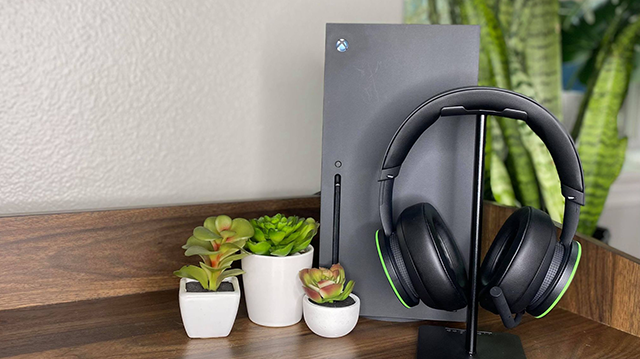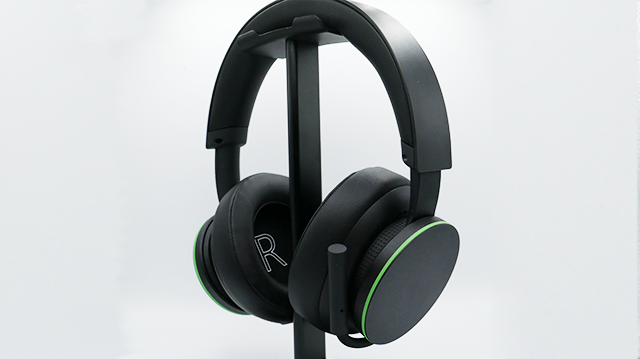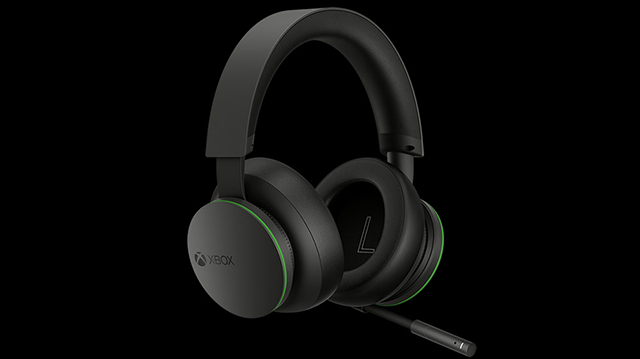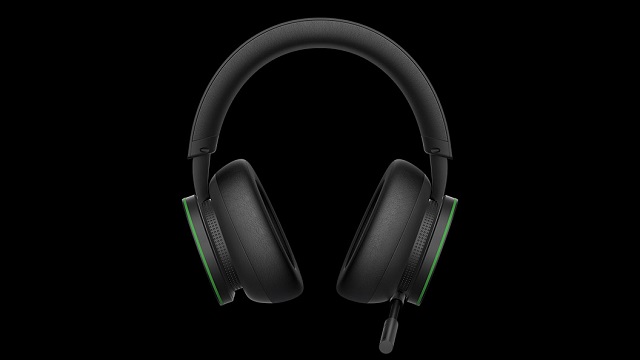Buzz is something that typically comes from headphones, but Microsoft seems to have generated quite a bit of it with their just-released Xbox Wireless Headset. Somehow these $99 headphones have become as hot and as hard-to-come-by as the next-gen Xbox Series X|S consoles themselves.
Is it worth the hype? Absolutely, if you use them right.
In order to review these headphones, I used three other headsets as reference tools. The Corsair HS35, an inexpensive wired headset ($39.99), the Logitech G Pro X, a premium wireless headset ($199.99), and the Sennheiser Game Zero, a premium wired headset ($299.99). All are closed-back like the Xbox Wireless Headset.
The intention is not to A/B test these peripherals, but to provide context and a set of reference points.
Design and Presentation
As has become standard practice with all of their products, Microsoft has packed this headset into an easy-to-open box that provides a nice visual presentation when opened.
Inside the package are the headphones, a short USB-C charging cable, and some modest instructions. It would be nice if Microsoft included a charging brick or a longer cable for those who have their Xboxes nestled into cabinets, but that’s admittedly a very minor gripe.

The design is intuitive and minimalist. Microsoft has forgone the obnoxious colors and flashy lights seen on other headsets in favor of a sleek aesthetic befitting the Xbox Series X. Rather than the usual assortment of random geometric shapes that would be more at home on an early 2000s metal album, the plastic surface is instead flat, with a slightly rough texture.
The assembly is matte black, save for a thin band encircling the outer edge of each ear cup and a few unobtrusive status lights. Etched on the right-hand side is an engraved Xbox logo, and I really appreciate that the “Left” and “Right” indicators are in large, easy-to-read letters on the inside of each cup.
The plastic has a quality feel to it, and the faux leather around the ear cups is soft and supple.
Weighing in at just shy of 11oz., these are on the lighter side for a set of wireless headphones, which is good news. These weigh less than the Logitechs, and the exact same as the Sennheisers.
Overall comfort is good, but not perfect. I have an average-sized head, and I found the compressive force to be on the tight side. As closed-back, passive noise-canceling headphones, the earcups on these are designed to surround your ears with an effective seal, and they are smaller than I would prefer, making my ears sore after about an hour of wear time. That’s not an issue with my Sennheisers or Logitechs.
After a longer break-in period, the Xbox Wireless Headset did start to relax, but, pandemic permitting, if you have a large cranium, I would suggest trying these on before buying.

Headphone features tend to be a secondary concern for me on any set, but my goodness: the Xbox Wireless Headset may have changed that. Each ear cup has a rotatable knob, with each side controlling a different function, with the right side rotating to adjust volume. Physical volume controls like this aren’t exactly groundbreaking, but the motion is very natural.
What really blew my mind, though, was the left ear cup knob, which changes the game-chat mix. One direction increases party-chat volume relative to your games, and vice versa. Within minutes of playing games with friends, I found myself turning the chat down to hear story beats, and then up when we needed to coordinate. It is (and I do mean this literally) a game-changer.
This feature alone is almost worth the price of admission for me.
The Xbox Wireless Headset claims a battery life of “up-to” 16 hours. This is no exaggeration. After a full night of charging, I set the headphones to some music early in the morning and let them run all day at a moderately high volume. By midnight, I was ready to sleep, but the music was still going strong.
Sound Quality
The Xbox Wireless Headset sounds great… mostly.
These are purpose-built gaming headphones, which typically means lots of bass, lots of boom, and lots of mediocre highs. Surround sound and directionality are a big focus, and this headset supports spatial technologies to create an effective simulation of sound in three-dimensional space.
Windows Sonic, Dolby Atmos, and DTS Headphone: X can be activated from the Xbox Audio Setting menu, though the latter two options require free app downloads.

My first sound test was with Sea of Thieves. I was greeted by the sound of a cello that could have been in the room with me, and the bass had an incredible amount of texture. As I booted up and sailed, the crash of waves and the ringing of bells was rich and immersive, creating an outstanding sense of spatial awareness.
Next, I downloaded the Dolby Atmos plugin and switched to Destiny 2. The extra bass added a much-appreciated feeling of weight to the shooter’s gun play. Speeding around in my sparrow introduced me to a secondary crackling sound from the engine I hadn’t noticed before, hammering home the headset’s excellent surround sound quality.
My foray into the crucible had tangible benefits, too: I could clearly discern the direction of footsteps and gunshots, giving me ample opportunity to position myself in ways that seemed advantageous.
Dialogue was a bit of a mixed bag. Speech was clear unless there was action happening at the same time. In those cases, bass would often overpowered dialogue, an ongoing issue I would discover (and a common one in gaming headsets; the Logitech and Corsair both do the same).
Hellblade: Senuas Sacrifice is a game that specifically recommends headphones and was the final gaming test. As expected, the surround sound was a massive difference-maker. The disembodied voices floating around tormenting and guiding Senua were crystal clear, and the way the sounds invisibly moved in three-dimensional space was both haunting and striking.
To give you more control over the sound quality, configuration menus allow you to adjust five bands of equalization but boosting treble resulted in harsh highs, and the lowest band you can tweak is 125 Hz, leaving the real low notes out of your control. You can still understand what is being said, but not with the same clarity of the less bass-heavy Sennheisers.
Mic Quality

The built-in microphone is good. It does a respectable job rejecting background noise and has an adjustable auto-mute feature. There is also an easily located button for manual mute.
The length of the boom is short, so it only reaches about half of the way from my cheek to my mouth; however, my teammates had no trouble understanding me. We performed several direct comparisons between the Xboxes, the Corsairs, and the Sennheisers, and in each case, the Xbox Wireless Headset was noticeably superior to the Corsair, but not as clear as the Sennheiser.
Non-Gaming
Movies were much the same as games. The headphones tracked the action well in The Killbox scene in Iron Man 2. Directions were easy to discern in the chaos, and the weight of the heavily armored suits was tangible. The sound of shell casings falling to the ground was a bit washed away, but that is my only quibble.
The climactic poker showdown in Casino Royal between James Bond and villain Le Chiffre was exemplary. Every turn of a card, every fall of a chip was distinct, and Daniels Craig’s booming baritone came across perfectly. Background chatter was lively, but not distracting, and the music track blended in nicely.
The Xbox Wireless Headset also works well for music, either through the console itself or after being paired via Bluetooth to another device.
As with gaming, heavy bass lines benefit the most here. Billie Eilish’s Bad Guy was essentially perfect, with effortlessly driven bass forming the core beat. Can’t Stop the Feeling by Justin Timberlake was solid, but tended to fall apart when Timberlake hit the highest frequencies. I’ve always used Norah Jones – Don’t Know Why as a reference for stereo imagery, and as expected, these headphones performed great, drawing up a vivid soundscape.
Xbox Wireless Headset Review — The Bottom Line

Pros
- Very Good Sound Quality Overall
- Amazing Spacial Audio
- Game-Chat control!
Cons
- Strong bass overpowers mediocre highs
- Can be fatiguing to wear for prolonged periods of time
The Xbox Wireless Headset is a purpose-built gaming headset, and a damn good one at that. Heart-pounding bass meets mostly detailed and clear audio. Combined with outstanding spatial recreation, these provide an excellent gaming experience.
They work well enough for movies and music, too, but in each case, the strong bass can overcome the more mediocre treble frequencies, and the limited equalization options don’t afford a lot of opportunities to try and correct for this.
The design is aesthetically pleasing and feels well built. The comfort level is good, but it could be a bit better, as could the quality of the built-in microphone. The physical controls for volume and game-chat mix are amazing, though.
Overall, these are excellent headphones that are well worth the $99 price tag, and worthy of being the next piece of gaming equipment you obsessively refresh webpages in order to track down and purchase.
Specifications:
| Driver | Paper Composite, 40mm w/ neodymium magnets |
| Type | Circumaural, closed back |
| Frequency Response | 20Hz—20,000Hz |
| Impedance | 32 ohms |
| Weight | 312g |
| Connection Type | Bluetooth version 4.2 (A2Dp, HFP, HSP) |
| Battery Life | Up to 16 hours |







Published: Mar 25, 2021 04:28 am